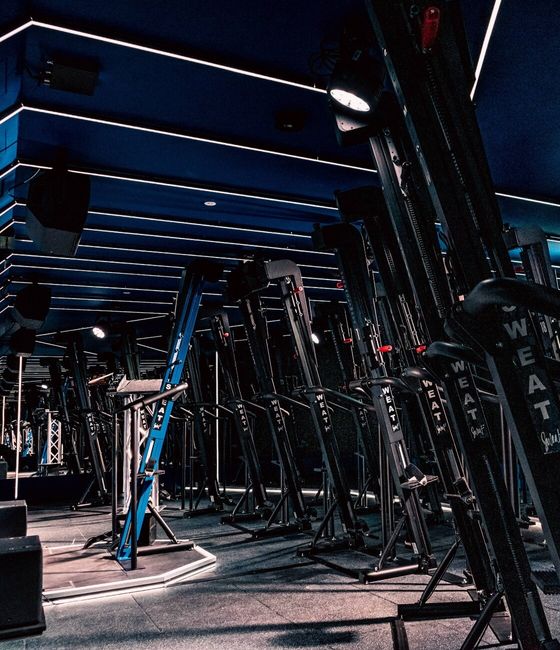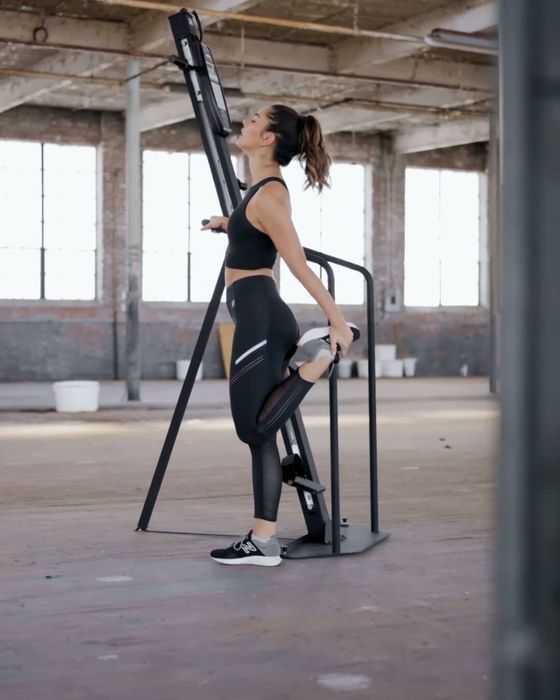The Prime Clinic, a Leamington Spa-based practice set-up by qualified physiotherapist, Remi Mobed, providing support to its range of elite athletes across a number of fields of sport.
Among the clinic’s offerings is its Versapulley and Versaclimber, both of which are used by its roster of national and world champion athletes, with the aim of building resilience, perfecting training performance and enhancing recovery from sport-related injuries.
The sporting professional, who’s worked with some of the biggest names across tennis, football and rugby, shared his thoughts about his career and how the Versafamily benefits his clients across a variety of sporting faculties.
How long have you been a qualified physiotherapist?
I’ve been a qualified physiotherapist for 17 years and have 15-years’ experience in the sporting industry. Although The Prime Clinic has been open for 18-months.
The industry is so broad, and there are a number of avenues I could have taken next, but I took the plunge and decided I wanted to consult privately with athletes across disciplines. Over the next two years, I’d like to bring another couple of practitioners on board, and make the move to a larger and more specific rehabilitation facility in Warwickshire.
Are you able to share more information about what kinds of athletes you work with?
My job is really exciting, and it’s so diverse. I’m currently working with premiership / international football and rugby players, as well as being contracted to work for Cirque du Soleil and other top 100 ranked tennis players, who are performing at their highest performance level.
Typically, what challenges do your clients come to you with to help resolve?
I’m working with longer-term, complex injuries that are normally a period of 3-4 months plus recovery time. Players enjoy coming to me not only because of my expertise, but for the mental refresh of not being in the same place rehabbing all the time. I work closely with the medical teams from clubs when they send players to me for an intensive rehabilitation break at my clinic.
What I want to do is help athletes to be their best, offering an extraordinary amount of detail and one-to-one sessions in their physical conditioning and programming – all with the aim of enabling them to perform at their best on the field or on the court.
In your experience, how much of an impact can equipment have on a client’s body, when compared to physical methods of improving like heat treatment?
As therapists, it can be easy to fall into the trap of being too passive, with our treatments. For example, the client can lay there in the clinic, and we work on them with massage or manipulation, or a range of different manual therapies. Personally, my philosophy is to get an athlete to manage to help themselves, so they’re not relying on me – after all, they’re not always going to be in the clinic with me.
Not only does the Versapulley and the Versaclimber help to build resilience in the athletes’ body, they help them to do that safely when they’re recovering from certain injuries.
What do you think the Versapulley’s strengths are?
The Versapulley has been a feature in my practice ever since I started at London Wasps in 2005. And, since opening my practice, we’ve been lucky enough to use a variety of products from the Versa family – a number of the players at London Wasps and in the international teams benefitted from their unique capabilities.
It’s incredibly versatile; you can use it for upper limb and lower limb, and whole body exercises. One of the best things about it is the way it can simulate the eccentric phase of a movement; it’s relatively safe and I think that clinicians generally are too protective of the athlete today, not exposing athletes to forces that are capable of producing. The Versapulley not only trains the concentric phase of a movement but the eccentric phase as well.
When they look at any form of sport where there is heavy accelerations and decelerations, particularly in sprinting, changes of direction or stopping, the rates of eccentric force development is very important – when rehabbing an athlete, clinicians can sometimes be guilty of not training this component enough. This is why I use the Versapulley – because I know that helps train that specific aspect of force before applying it on the pitch.
How do you adapt training sessions on the Versapulley to suit various sports, including those in rugby, football and tennis?
First, we need to understand our clients’ sports and the movement that is required for that sport.
Sporting patterns are about athletes “getting into shapes and changing shapes”, and the difference between the two. If you can replicate those shapes and movements with the knowledge of that sport, it can help clients get stronger in the plains, movements and directions that are required for a particular skill.
With regards to the Versaclimber, why have you recommended that Kyle Edmund uses the machine?
The great thing about the Versaclimber is that it’s low impact. We needed to challenge Kyle’s cardiovascular system for him to be able to play tennis, and with his particular injury, we’re currently not able to do that with running. So, the Versaclimber offers us a great selection of movements to be able to train him to a high degree, but without loading his lower limb to a dangerous level.
What are Kyle’s current/ongoing fitness goals?
The Versaclimber allows us to challenge Kyle and train him without it being a concern for his injury. He’s due to play mixed doubles in Wimbledon this month, and then we build up towards tournaments at the US Open in August.
As a practitioner, the Versapulley offers me a lot of variety of what I can do with the machine and how I can load the different aspects of strengths with an athlete – in my opinion, I think these machines are so often underutilised in the elite sporting space, despite being such incredible pieces of kit.
The Versaclimber itself also provides me with a solution to allow the athlete to be more fit aerobically and anaerobically. It allows me to do that safely while not loading the lower body excessively.
For more information on our Versaclimber machines, visit: www.versaclimber.co.uk.



